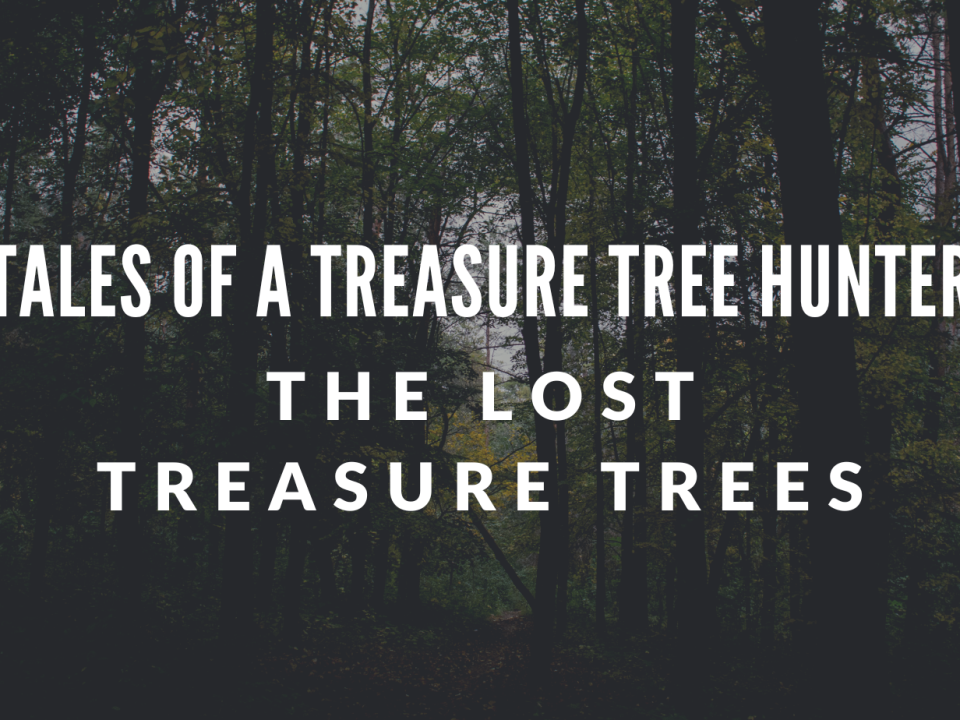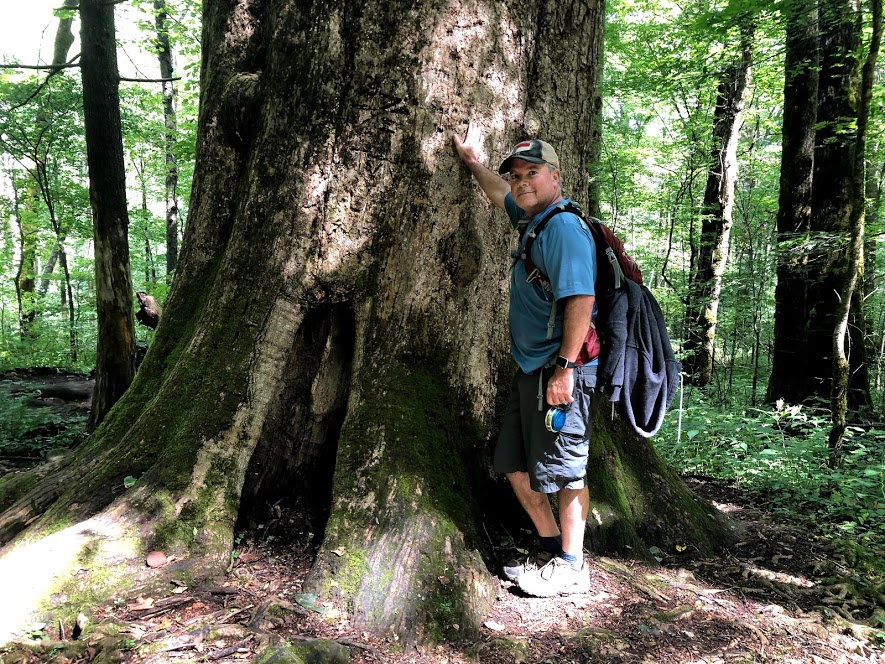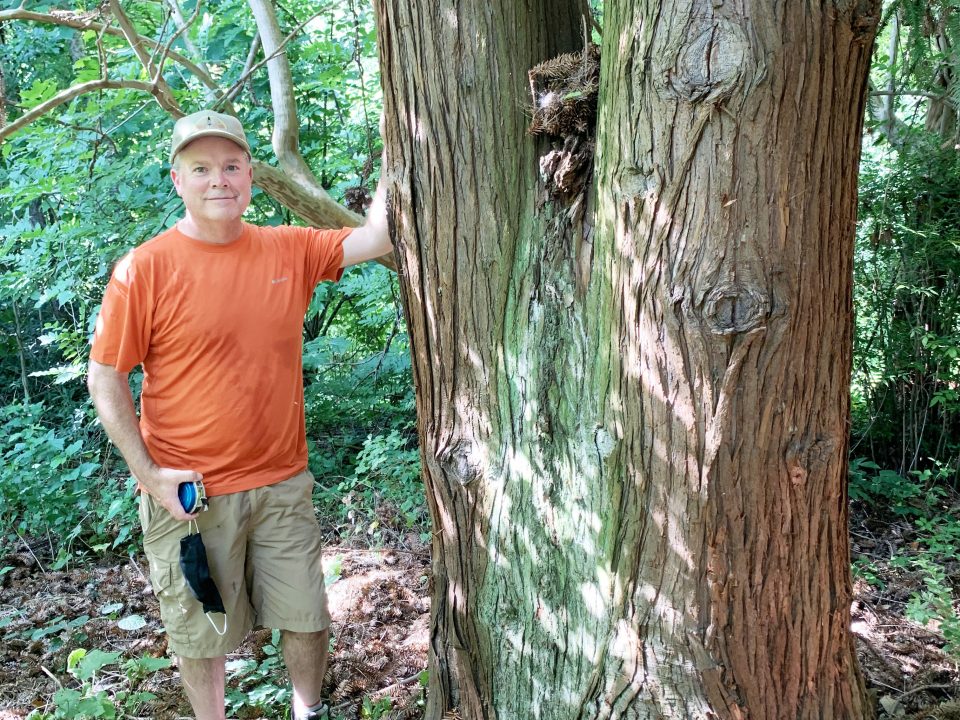Roots of a Tree Hunter
TreesCharlotte Prepares our Urban Forests for Climate Change
9.15.20Homeowners’ Guide to Tree Placement
10.02.20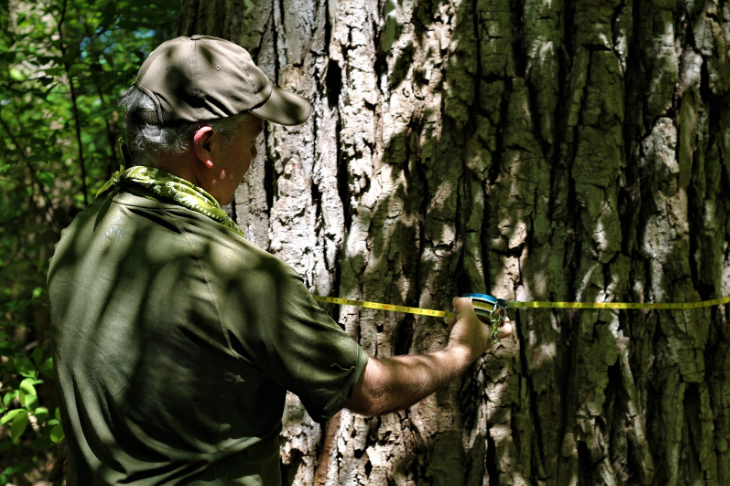

By Brett Dupree
I can’t pin down exactly the point where I really fell in love with trees. Going all the way back to childhood, I used to build trails in the woods behind my grandparents’ house. During high school, I started to do more and more hiking. In college, I did even more camping and hiking, mostly in the NC mountains. During that time, I made a lot of visits to the Great Smoky Mountains National Park, Pisgah National Forest, the Blue Ridge Parkway, and great areas like the Nantahala River Gorge. Around that same time, the travel bug hit me and I made my first big journey across the country to see all of the big National Parks out west.
I was lucky enough to meet my wife Maggie in the late ’90s, and we began making big treks out to western parks almost every year. In 2010, we made our first trip out to California. This may have been the point where a light bulb came on when I saw my first giant Sequoias. Growing up on the east coast, nothing can prepare you for seeing trees of this scale. I just kept thinking it looked like the fuselage of a passenger jet sticking straight up out of the ground. Bark almost a foot thick, heights around 300 feet and a trunk circumference of 100 feet. On top of that, you have to digest the fact that many of them are 2,000 to 3,000 years old. Two years later, we returned to northern California for our first exploration into the Coast Redwood groves. From that point, I was hooked. As awe-inspiring as the Sequoias were, the Redwoods just blew my mind.
Back home in Charlotte during the last 2-3 years, I kept noticing the really big trees right in our neighborhood. I also started noticing that a few of them had a “Treasure Tree” tag nailed on the trunk. What the heck is that? My curiosity always leads me to web searches, but this time I came up almost empty handed. I did stumble onto a couple of online articles and some really good blogs written by a guy named Mike Orell. Mike’s writing then led me to the Queens Crown, and I started piecing a few things together about the Treasure Trees Program.
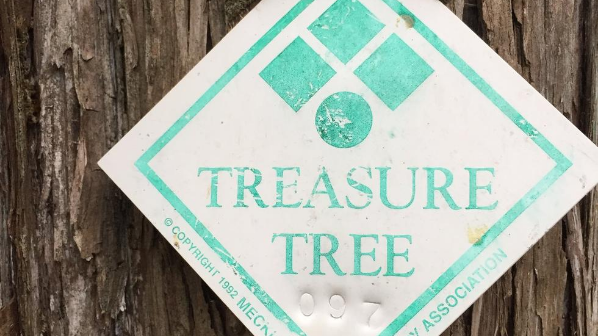

This quickly became an obsession. First, to just get my hands on the original list of 123 trees and second to start looking for them. Mike had about 60 in a list he had been building, and then Patrick George and Patrick Anderson had some other information on the Queens Crown website (now defunct). One of the first things I started doing was to create my own Google Map with locations of known trees and probable locations of others. This was the summer of 2018. I continued to hunt for the trees for almost another year, and try to find any other information to get the original list pieced together.
I began locating some of the real superlative trees from the list, and that was such a rewarding experience standing in the shadow of some very old giants. I was already consuming a lot of information about Redwoods and how it was possible for them to grow so tall. How does a 370-foot tree pump water all the way up from the roots to the top of the crown? More and more, I wanted to find the tallest and biggest trees not only on trips out west but right here in the neighborhoods around Charlotte. I bought a laser hypsometer in that summer of 2018 on eBay, and taught myself how to measure tree height. In 2019, I followed that up by purchasing a logger’s metal 50′ tape measure to document trunk circumference. I also taught myself proper ways to calculate total points for a tree by combining the height with trunk circumference and average crown spread. I read books, and I sent emails to people like Professor Steve Sillett in California. He’s the premiere expert in the country on Coast Redwoods and many other giant trees all over the world.
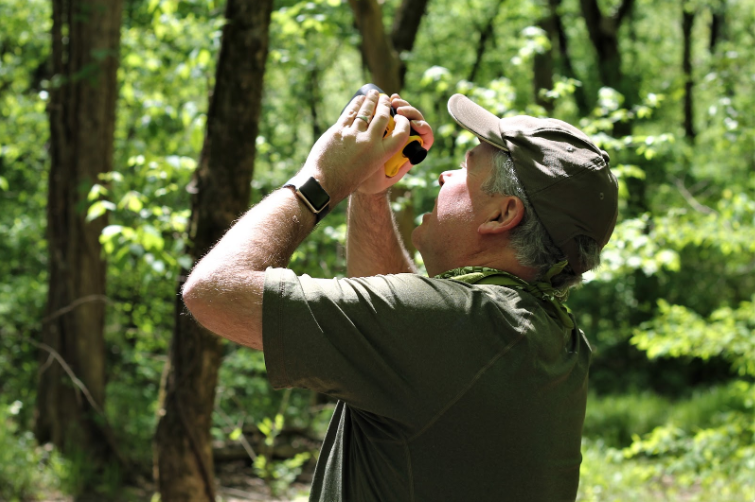

My job as a software Product Manager and background as an English Major drives me to do a lot of research, so I started poking around at the City of Charlotte and Mecklenburg County for public records on the original Treasure Trees Program. This connected me with Erin Oliverio, who is the Tree Canopy Program Manager for the City of Charlotte. Erin invited me to a Queens Crown committee meeting in September 2020 at Olde Mecklenburg Brewery which is where I met Erin, Jen Rothacker, plus Patrick and Julia George. After that meeting, I finally got to see the Google Map they had with all 123 original trees and the known or probable locations. This overlapped a lot with my map, so I just merged the two together. Patrick also bought me a beer after the meeting, so I was in!
In November 2019, we needed more details about the original trees. I wrote old-fashioned letters and mailed them out to Dr. Bill Logan and Tom Martin. We all knew that Tom Martin and Joe McLaurin started the original program, and that Dr. Logan was program chair for several years. I got a nice letter back from Dr. Logan, but he didn’t have any old documentation. Then, I got a call one day from Tom Martin. We talked for a long time, and he told me he’d get some of his materials together and meet me to hand it off. I got all of that from Tom in December 2019, including a thumb drive that held the original list of all 123 with location details and all sorts of other juicy information. This was what we had all been looking for.
I was already going out on the occasional weekend doing “tree hunts.” My wife didn’t really want to go out and do this with me all the time, but she still encouraged me to keep looking. After getting the tree details from Tom, we had all sorts of new location information to track down. Many of the locations were in people’s backyards, in the front of apartment complexes, in public spaces, and out in the open on our college campuses. Some were literally out in the woods. I went out several times on some minor bushwhacks and found some of the original trees. We found one original alive and one dead in the woods around McAlpine Park. I made at least three trips out to some woods near McDowell Nature Preserve before I dragged Micahel Falero out there from WFAE to do an audio-recorded bushwhack. On that trip, we lucked out by walking right into the elusive Overcup Oak (tree #017 on the list). It still had the original metal tag hanging on it.
I was tracking the trees down for almost a year before I went back and looked at a closeup photo I took of an original tag. There was clearly a 3-digit number stamped on it! This was about the same time I got the original list from Tom, and it then dawned on me that all of the original tags were hand-stamped with the tree ID number from the original list. Tom has since given me the remaining stock of unused metal tags, and the stamping set so that we can continue adding new trees to the program.
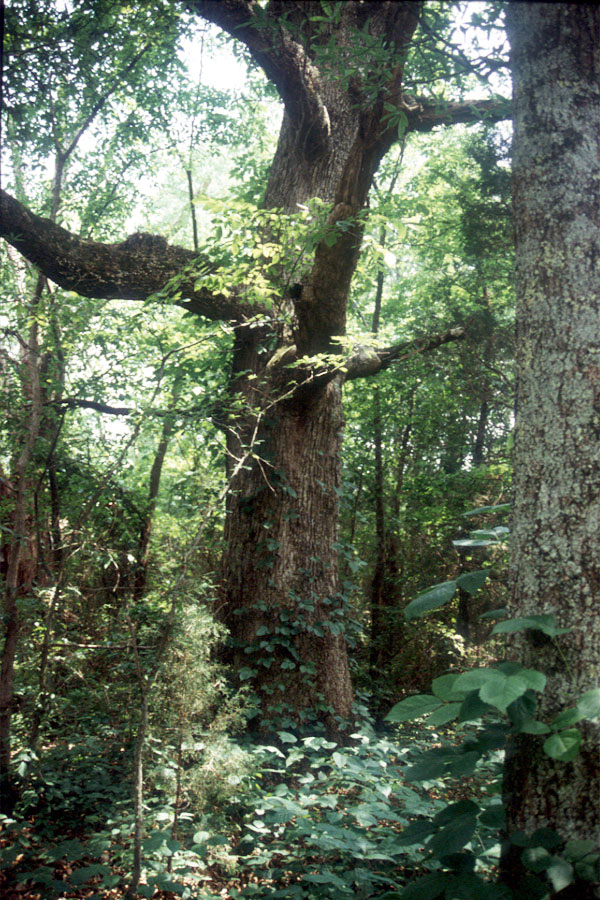

The new committee really started putting things together this year to breathe new life into the old Treasure Trees Program. By March 2020, I had personally visited about 40 of the original 123 that were still standing. Another 40 were confirmed gone, and the rest had to be tracked down. In April I wrote, printed, and mailed letters out to all the homeowners at addresses where the remaining trees once stood. I started getting calls and emails pretty quickly, and then in June the TreesCharlotte team got its new intern Chris Chao. Chris is a student at Davidson, and he jumped right into the Treasure Trees Program. Chris started going out and knocking on doors, confirming original trees in places I hadn’t made it to yet. He was beating me to the punch on a few trees, but I just loved the enthusiasm! Pretty soon, Chris and I became a tree-hunting duo during the COVID-19 lockdown on weekends. We put on our masks, took our laser, tape measures and notebooks out in the field and started chipping away at the rest of the trees.
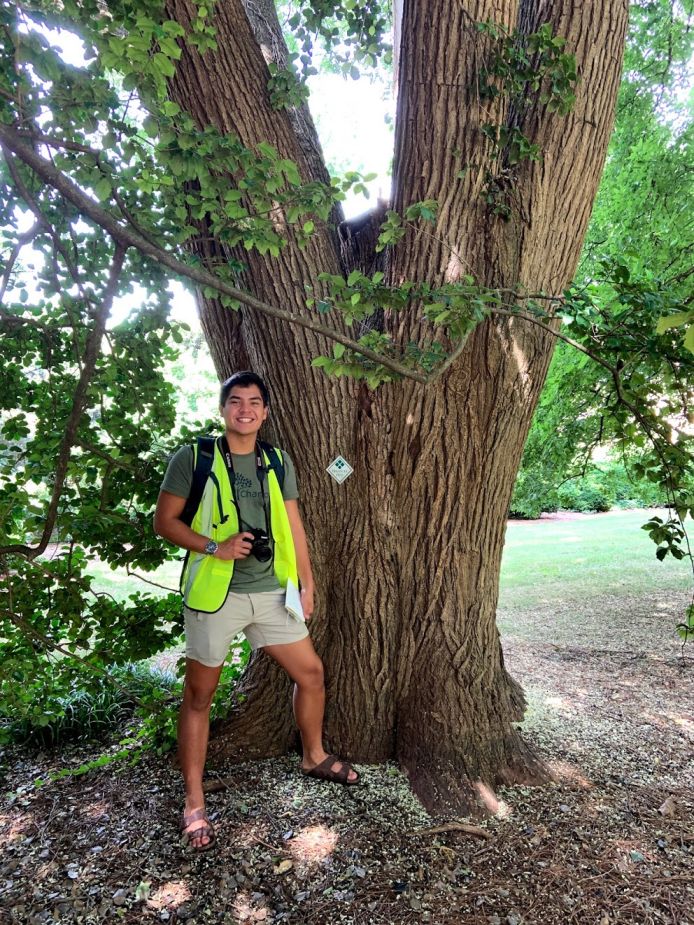

We were tracking all of our documentation in Google Maps, Google Sheets, and Google Drive. Chris undertook the task of organizing all of that, and then TreesCharlotte accepted the responsibility of hosting everything. Patrick George had started this kind of work on his Queens Crown website, but it was a lot to keep up with in addition to running Heartwood Tree Service. During COVID, it was a good time to work on building out new web pages and getting a ton of new tree photos from the field. One of the best learning experiences was taking new measurements from original trees still standing. I started to realize that the living trees from the original program had grown about 20% (girth, height, and crown spread) in a span of about 20-25 years since first being measured and added to the program. That is amazing, and encouraging that trees in a mostly urban setting can thrive so well.
So now, here we are with a great old tree program stretching out new roots and taking itself into the 21st century. Tree lovers can enjoy the culmination of original program work, and all the recent work by the new committee. Try out one of the tree tours, or look for future guided tours on some of those routes. Most importantly, help us to grow this program by nominating new contenders for the Treasure Trees Program.
My thanks go out to all of the people mentioned above who helped along the way! Especially, thanks to my wife Maggie for putting up with all the weekend tree hunts.
Recommended reading:
“The Hidden Life of Trees: What They Feel, How They Communicate – Discoveries from a Secret World”
Peter Wohlleben
“Thus Spoke The Plant” Monica Gagliano
“The Overstory” Richard Powers (fiction, based on some factual events)
“The Wild Trees: A Story of Passion and Daring” Richard Preston
“Native Trees of the Southeast” Katherine L. Kirkman
“National Wildlife Federation Field Guide to Trees of North America” Bruce Kershner

